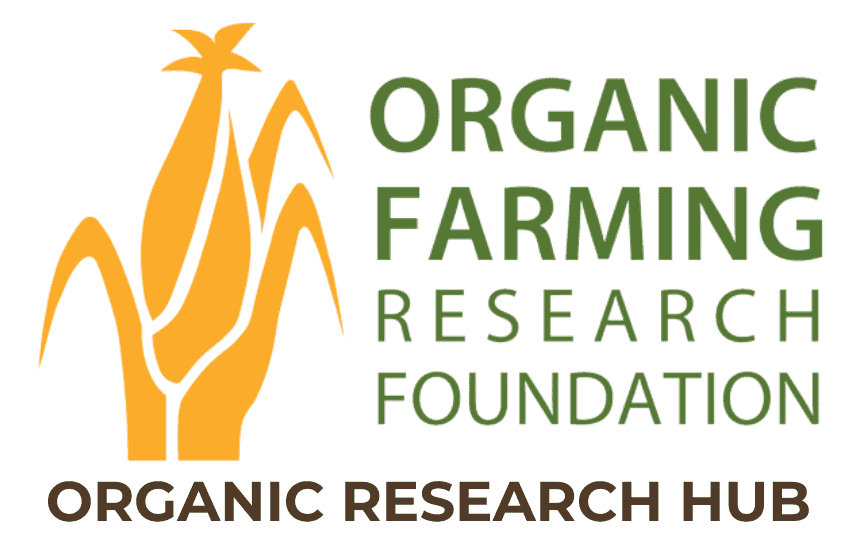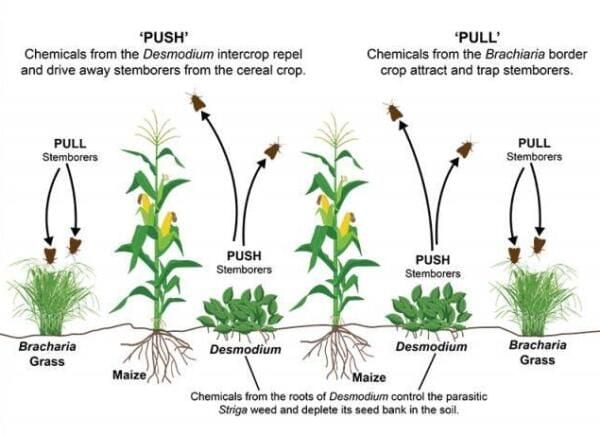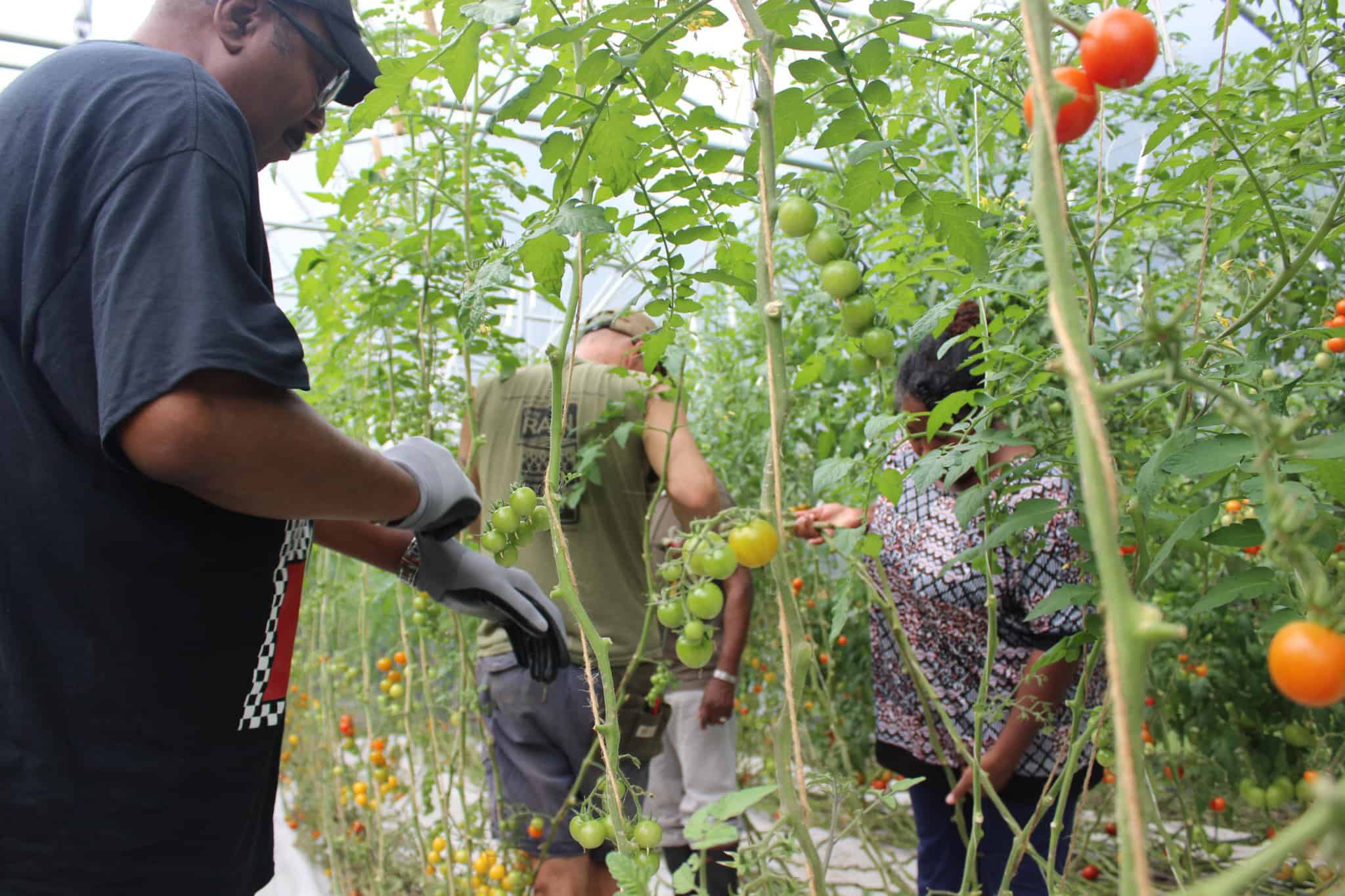Adapting and Expanding High Tunnel Organic Vegetable Production for the Southeast
Project Director: Xin Zhao, University of Florida
Project overview
Organic vegetable producers in the Southern region face limited soil fertility, water management challenges, and intense disease, pest, and weed pressures. The high tunnel offers a controlled environment that can mitigate many of these problems and give high crop yields and net returns. In addition, high tunnel production supports local food systems and resource conservation.
High tunnel production requires careful management of temperature, humidity, and intensive crop rotations, and can entail new soil, nutrient, pest, and disease management issues. This project conducted field station and on-farm research into management of the physical environment, crops, nutrients, soil health, pests, and diseases in organic high tunnel vegetable production. A collaboration of farmers, researchers, service providers, and other stakeholders identified priorities, designed and performed experiments to address the full range of needs, conducted economic analysis, and delivered practical outcomes to a wider audience.

Farmer takeaways
- Shade cloth (30%) can improve summertime tomato growth, but it should be removed during the fruiting period to optimize yield.
- Grafting tomatoes onto vigorous rootstock can reduce diseases and improve yield.
- Early planting (late January for north-central Florida) improves tomato yield, quality, and efficacy of grafting in high tunnel production.
- Liquid organic fertilizers enhance nutrient use efficiency and yield, while compost builds soil health, organic matter, and long-term soil fertility.
- Whiteflies, thrips, and aphids can be managed through a “push-pull” strategy of repellents and attractants combined with flowering plants to attract natural enemies.
- Tomato diseases can be managed through correct diagnosis and targeted use of biological materials combined with crop rotation and disease resistant cultivars and rootstocks.
Project objectives and approach
Develop a robust network of farmers, researchers, and other stakeholders.
An advisory panel of farmers, service providers, farmer organization representatives, and high tunnel vendors played a central role in setting priorities, developing research protocols, conducting on-farm trials. Project partners included Florida Organic Growers, Georgia Organic, Florida Black Farmers’ Association, county extension agents, and NRCS personnel, and farmers.
Assess the efficacy of environmental controls on organic high tunnel production of vegetables and leafy greens.
Replicated trials were conducted over three seasons to compare organic high tunnel tomato, basil, lettuce, and arugula production with and without shade cloth, with and without misting (greens), with black or white plastic mulch (tomato), and different planting dates.
Optimize planting time for season extension in organic high tunnel systems.
Tomatoes and greens were planted on multiple dates from Oct 1, 2019 through January-February 2020. Crop yields and quality were measured.
Determine the influence of integrated nutrient management practices on nutrient use efficiency and soil quality in high tunnel organic vegetable production.
Replicated trials were conducted over three seasons to compare cowpea versus weedy fallow preceding the production crop, granular (10-2-8) versus liquid (5-1-1) organic fertilizer, and different soil amendments (yard waste compost, cow manure compost, vermicompost, or none). A succession of pac choi (fall), spinach or lettuce (winter), and grafted and non-grafted tomato (spring) was grown each season. Yield, quality, crop nutrient uptake, and soil nutrient and health dynamics were monitored.
Monitor and characterize plant pathogens and integrate biological products and cultural practices into organic vegetable disease management for high tunnels.
Tomato and leafy green crops were monitored for plant disease. Soil and plant tissue samples were tested to identify pathogens, and appropriate biological and cultural controls were used.
Monitor arthropod pests and beneficials and develop cultural and biological control strategies for whiteflies and aphids in high tunnel organic vegetable cropping systems.
High tunnel crops and refuge plantings of attractive species (e.g. marigold, basil, dill, sweet alyssum) were monitored for pests and natural enemies.
A “push-pull” strategy for managing aphids and whiteflies was developed, with potted plants of society garlic (Tulbaghia violacea), lemongrass (Cymbopogon sp.) and Citronella providing the repellent (push) and basil, marigold, or sweet alyssum placed at the edges of the high tunnel as attractants (pull) for both pests and natural enemies.
Analyze on-farm economic viability of high tunnel organic vegetable production and identify the factors influencing high tunnel adoption among organic growers.
The team developed enterprise budgets including high tunnel construction and maintenance costs and crop production.
Key findings
High tunnel environmental control, cultivars, and planting dates:
- Shade cloth (30%) reduced high tunnel heating and improved tomato plant growth during summer, but reduced fruit yield due to lower light levels during the fruiting season.
- Early planting (late January) enhanced tomato yield over late planting (early March).
- Grafting enhanced fruit yield and nutrient content in all treatments and was most effective in the early planting.
- The high tunnel environment enhanced lettuce plant health and yield over field-grown lettuce in Florida and Georgia.
- Top performing lettuce cultivars were identified for both high tunnel and field.
- Early planting (mid-September) improved lettuce and basil yields over later planting (early October) whereas the reverse was true for arugula.
Nutrient management, amendments, and soil health:
- The cowpea cover crop had limited effects on soil health and crop yield.
- Liquid fertilizer enhanced nutrient use efficiency and yield in tomatoes and greens over granular fertilizer, while the granular fertilizer contributed to long term soil health.
- Yard waste compost improved pac choi and lettuce yield, and manure compost improved tomato yield, compared to unamended control.
- Both types of compost enhanced soil organic matter, aggregate stability, and “overall fertility score” while reducing bulk density.
Pest and disease IPM:
- Grafting virus-resistant cultivars onto soilborne disease-resistant root stocks protected tomato crops against many pathogens.
- Great variation among site-years in the tomato disease complex required an adaptive strategy of resistant cultivars and grafting rootstocks, rotation with nonhost crops, and biofungicides selected based on correct diagnosis.
- Sweet potato whiteflies, aphids, and thrips were the most common high tunnel pests, followed by leaf miners, planthoppers, stink bugs, armyworms, and hornworms. Sticky cards captured multiple species of parasitoid wasps, while buckwheat, alyssum, and marigold attracted big-eyed bugs, lady beetles, and lacewings, thereby enhancing biological pest control.
- The push-pull strategy, combined with flowering plants (marigold, basil, alyssum, or a commercial blend for beneficials) and a NOP-allowed pheromone attractant for beneficials showed promise for biological pest management in the organic tunnel, and the green leaf volatile cis-3-hexenyl acetate proved attractive to sweet potato whitefly.
Resources
eOrganic Webinar - Adapting and Expanding High Tunnel Organic Vegetable Production
Read MoreUsing High Tunnels to Enhance Organic Vegetable Production in Florida: an Overview
Read MoreWhat to Know about High Tunnels for Vegetable Production in the Southeast
Read MoreUSDA - Project Report - OREI 2017-51300-26813
Read MoreLocation
FloridaCollaborators
Jesusa Legaspi, USDA-ARS, Florida
Marilyn Swisher, University of Florida
Nicholas Dufault, University of Florida
Juan Diaz-Perez, University of Georgia
Amanda Hodges, University of Florida
Zhifeng Gao, University of Florida
Alejandro Bolques, University of Florida
Timothy Coolong, University of Georgia
Region
Southern
Topic
Soil Health, Crop Nutrient Management, Disease Management, Insect/Pest Management, Cropping Systems, Season Extension
Category
Vegetables/Fruits
Year Published
2023



